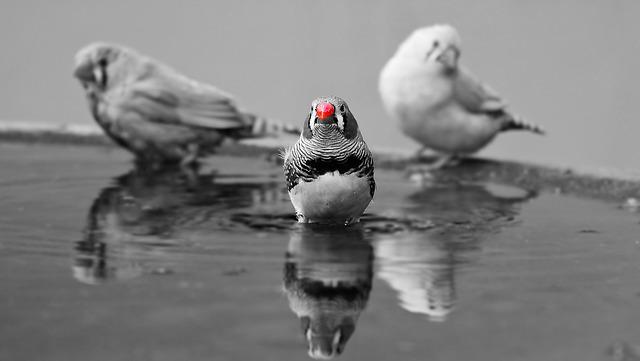I listen to RadioLab. A lot.
This past summer I’ve been digging my way through the archives, listening to episode after episode. Some of the freelance work I do is passive (i.e. taking photographs of textiles or whipping up simple graphics), so I keep myself company with a good podcast. Part of the reason I’ve velcroed myself to RadioLab is because of the brain-tickling topics that often call belief systems into question or approach a familiar topic with a fresh perspective. But another reason I listen is the hosts. Something about Jad Abumrad’s inquisitiveness and Robert Krulwich’s soothing voice makes me want to hang out with them at a bar and talk about life’s big questions.
So, where do the Galapagos finches fit into all this?
RadioLab ran an episode on Galapagos that touches on some of the big questions and mysteries that surround the archipelago (If you get a chance, I highly recommend listening to the entire thing). I was immediately drawn into this particular episode because I studied in Ecuador and had the opportunity to visit this miraculous set of islands. When they began talking about the endangered finches, I had a visceral reaction.
My stomach knotted up and my lungs tightened. I could picture the sweet little birds; I could hear their songs fluttering through the trees. It made me incredibly depressed to think that those songs might be silenced one day soon.
As I listened to this episode of RadioLab, Jad and Robert began to paint a grim picture of the finch’s plight. An invasive species of fly was swiftly desiccating the finch population by laying its eggs in their nests–eggs that would become larva, larva that feeds on baby finches from the inside out. The Galapagos islands are a sensitive area (untouched for centuries by man or any kind of non-endemic species). When an outside species is introduced, the natives usually fare poorly. This was the case with tortoises and goats. When goats were introduced to the islands, tortoise populations plummeted. The goats competed for resources, gobbling up grass and shrubs, leaving behind dust bowls, devoid of vegetation.
So, what’s a poor finch to do when a flesh-eating fly is wiping out most of the hatchlings? Adapt.
Seriously. These finches have adapted in less than fifteen years. This is almost unheard of in evolutionary terms. Usually, a slow process of natural selection leads to the evolution of a species, but these finches appear to be evolving in real time. Pushed to the brink (five species of finches are in critical danger of extinction and six other species are in serious decline), the finches fought back.
Mother finches developed the skill to identify and eliminate larva from their nests. They even began eating them, which they would have never done fifteen years ago (scientists experimented with feeding adult finches fly larva in the year 2000 and had little success). Additionally, baby finches are beginning to climb up the nest walls to position themselves away from the larva at the bottom–an act that was never witnessed until recently.
Perhaps the most amazing adaptation of all is that different species of finches have begun to interbreed. This action defies the very definition of a species: under normal circumstances, animals do NOT breed outside their species.But the Galapagos finches were desperate. On Floreana island, the critically endangered medium tree finch began breeding with the small tree finch. They crossed a boundary that had been in place for hundreds of years for the sake of saving their species. A hybrid emerged. The new, cross-breed finch was better at combating fly larva and more likely to survive into adulthood. Even the song of the two species of finches began blending together (there’s something poetic about that, isn’t there?).
These finches are a lesson in survival and adaptation. Their situation seemed hopeless, but they fought through it and emerged stronger and better-equipped to deal with the perils of their world.
We can learn from this tenacity, this will to survive. When the chips are down, don’t walk away; don’t give up. Devise a new strategy and get back in the game.
Be a Galapagos finch.
EDIT:
And if you’re struggling to get back in the game? Don’t be afraid to accept help. There are several instances on the Galapagos islands (and elsewhere) in which scientists temporarily supported a species to bring it back from the brink of extinction. The tortoise was not too proud to accept help. Let’s learn from that.
Kate Bitters is a freelance writer and marketer. Her latest novel, Ten Thousand Lines, is a dystopian tale about a revolution, a witch hunt, and an unlikely friendship.
Author: KateBitters
Kate Bitters is a Minneapolis-based author and freelance writer. She is the author of Elmer Left, Ten Thousand Lines, and He Found Me. One of her proudest/nerdiest moments was when Neil Gaiman read one of her short stories on stage at the Fitzgerald Theater.


Love to listen RadioLab. TED radio hours is good, too.
Love to listen RadioLab. TED radio hours is good, too.
Agreed, Lisa! Quality radio. I get an incredibly amount of inspiration from both shows.